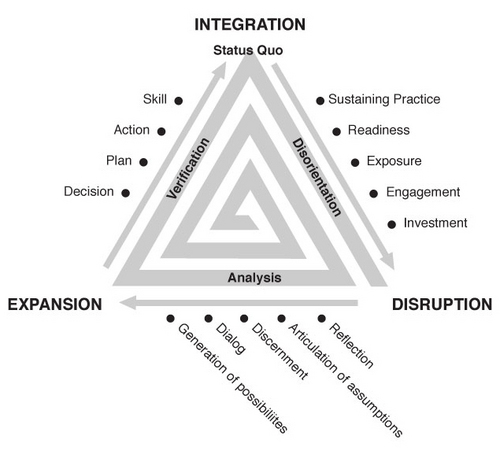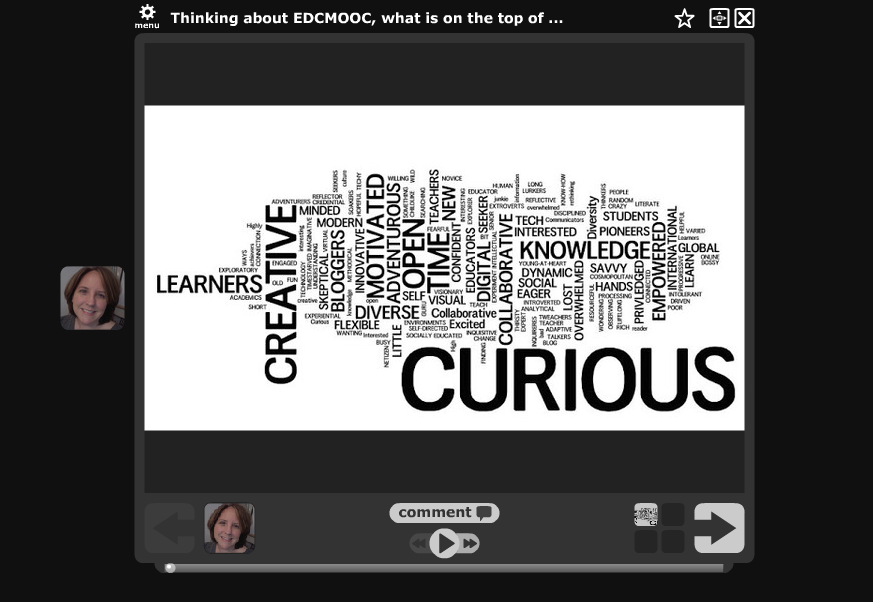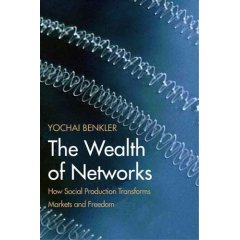This week’s materials in the CICMOOC on the Paradox of Structure sparked that seed of interest for me. For the last couple of years I have been exploring the contours of self-organizing within open organizational structures (e.g. open source software movement, world social forum). The 119 Gallery in Lowell, MA is often the focus of this work and I’ve written about it at various place on this blog [post 1, post 2, post 3]. However, the prompt to explore structure in the CICMOOC as one of week 3’s exercises has me returning to the comparison between this MOOC and my current Collaborative Exploration (CE) offered up by the Critical and Creative Thinking Program at UMass Boston.
I’m trying to enlist the help of one or more of the current participants of the CE to collaborate with me in the CICMOOC exercise on the Paradox of Structure. In the meantime, I thought I would explore the enabling and limiting features of the two current learning spaces I find myself in at this time. Both learning spaces are looking at creativity and ways to engage and enliven individual creativity.
The CE is a 22 day small group, case-based exploration under the topic of “Everyone Can Think Creatively!”. Meeting synchronously once a week for an hour using Google+ Hangout and engaging in individual inquiries based on the case in between are the main activities. Each synchronous session has a format and structure, while the individual inquiries are diverse and broad. The group exchanges are intended to support and stretch individual thinking.
The UMass Boston CE enables me to pick my own path of inquiry, but within a defined structural space that focuses or contains the inquiry. Much like the story shared in the CICMOOC lecture this week by Kathryn Jablokow.. There are colleagues to motivate and be accountable to as well as provide additional thinking and support. It also helps me to know that this is a contained activity with defined parameters of time and input which helps me move forward. In terms of limits, the CE has a small number of individuals to engage with. The connections are deep, but not particularly diverse. Also even thought the time is specified, it still creates some pressure to maintain the schedule.
The UPenn CICMOOC on Coursera has a more formal 8-week course structure. It is a MOOC, so thousands of individuals might be engaging at any given time. The course has build in a great deal of diversity in terms of materials, levels of engagement and assignments. There are assignments, activities and projects to prompt accountability. I am also participating with a learner initiated quadblog initiated by Cathleen Nardi with myself, Maureen Maher and Jack Matson.
The CICMOOC is enabling in a very different way. Here the course materials are more prescribed, but they are provided in easy to access and digest formats with the option to dig deeper if I like. Likewise, weekly activities and exercises are diverse enough and there is enough freedom to choose those that interest me. I have thus far found at least one exercise that energizes me each week. The course’s three possible levels of engagement create both freedom and support. Each level is presented as completely valid and no option is presented as better than the other, just different.
In terms of limits, the CICMOOC has provided the opportunity to engage with a very broad set of learners and potentially ideas. I have yet to fully engage in deep exchanges. In part this is a lack of my own commitment to do so, but without accountability (or obligation) built in I am finding it difficult to make the time to engage. The exception to this is the self-organized quadblogging group. This commitment to quadblog has been enough to prompt me to write regularly and interact with a few folks. I see that part of the exercise for this week prompts a step to participate in the discussion board, so I will see what happens next. This inability to have others really respond, react and prompt further thinking prevents deep understanding and exploration of the content.
I am gong to continue to think on these formats and for the time being it seem to me that any eLearning ecosystem needs to have a diversity of options and levels of engagement with content and learners. Enabling others and supporting learners to build that ecosystem is what I hope an upcoming open seminar on Personal Learning Networkswill explore.
Image from: http://davincidilemma.com/2010/12/add-structure-to-your-schedule-to-be-more-creative/







